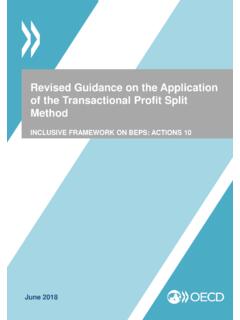Transcription of Homeless Management Information Systems (HMIS)
1 Department of Housing and Urban Development Office of Community Planning and Development Homeless Management Information Systems ( hmis ) cost estimation Guidelines cost Framework and Submission Recommendations Oscar Gutierrez, Project Consultant Center for Social Policy McCormack Institute University of Massachusetts Boston Boston, MA 02125 Aspen Systems Corporation Rockville, MD 20850 C-OPC-21201, Task Order 4 Homeless Management Information Systems ( hmis ) HUD Technical Assistance Project cost Guidelines and Recommendations Introduction This document develops a set of guidelines to assist SHP applicants in developing and HUD officials in reviewing Homeless Management Information system ( hmis ) cost proposals submitted by communities as part of their grant applications. The document presents a hmis cost framework that describes all possible cost categories and cost items a community can incur. The purpose of these guidelines is to outline the budgetary elements presented in cost proposals.
2 The document then presents recommendations on how to collect cost estimation data and guidelines to indicate whether there are possible inconsistencies or lack of proper estimations in a proposal. hmis cost Framework The hmis cost framework is all-inclusive. It considers all possible cost categories and cost items that a community might incur when implementing an hmis . The degree to which particular applicants will fit the framework depends upon a number of community and system characteristics. These are related to complexity of the requirements for an hmis , community size and level of integration or software homogeneity within the community. cost Categories There are five major cost categories that communities incur. This section identifies and outlines the major types. Further elaboration of these categories is presented in the cost Items section of these guidelines. Equipment Costs: These are the costs of acquiring and upgrading computer, telecommunications and security hardware for both central server organization(s) and the network of computer users.
3 These costs are normally correlated to the numbers and unit costs of hardware. Software Costs: These are the costs associated with the purchase of or license to use a specific hmis software package or service. These costs are normally connected with the numbers and unit costs of software users, and may also include fees for provision of hosting services by the software vendor or other entity. These costs also include the purchase of or license to use supporting software tools such, as report writers and data analysis tools. Costs of Services: Costs of services refer to the specific set-up and ongoing expenditures incurred when the community engages third parties, such as software vendors, consultants and technical service bureaus in the provision of specific services integral to the implementation, operation and recovery of a cost Guidelines January 2002 And Submission Recommendations 2 hmis . These costs are normally estimated on the basis of quantity, value, time and similar service-related criteria.
4 Personnel Costs: These are the costs of staff assigned to the implementation and subsequent operation of the hmis within a community. These costs are normally estimated on the basis of Full Time Equivalents (FTE), wages paid, work-hours or similar personnel-related criteria. Space-related Costs: Space related costs refer to the estimated cost of placing equipment and personnel at specific locations for which rental expenditures will be incurred. These costs are normally estimated on the basis of yearly rental occupancy rates. cost Items This section of the guidelines describes in detail cost items by each of the five categories mentioned above. Table 1 presents a summary. cost Items 1. Equipment On-line connectivity Central server(s) Facilitation Personal computers and printers Disaster and recovery Networking Security 4. Personnel Project Management or coordination 2. Software Data analysis Software licensing Programming Server and Client Administration Installation Technical assistance and training Support and maintenance Service agency stipend/allowance Training Customization 5.
5 hmis space and operations Supporting tools Equipment rental space Project Management space 3. Services Central organization space Training by third parties Hosting services Programming by third parties Customization system interface development Data conversion Security assessment and setup Table 1. cost item summary cost Guidelines January 2002 And Submission Recommendations 3 Equipment Costs Central Server(s) In order to achieve unduplicated counts in a cost effective manner, a community requesting funds will normally call for the acquisition of two or more computer servers. These are high-end computers that may cost 4 to 7 times the cost of a personal computer. Depending on the functionality and organization chosen for the system , the community may require up to a total of 6 servers: Application server for system -wide data and/or case Management (SW/CM) Database server for SW/CM Backup Server for SW/CM Application server for Information & Referral (I&R) Database server for I&R Backup server for I&R In the above example, I&R is separate from the system -wide and case Management application.
6 Different organizations handle various aspects of the system . The I&R application is more likely to be handled by an organization that already processes hot line calls, such as a crisis call center. The case Management application is more likely to be located at a state, city or county office, the offices of a major advocacy group, a major service provider or with the software vendor or an application hosting organization. A community that selects a software package or service that integrates all the hmis functions may require 3 servers to operate ( application, database and backup). The same can be said of a community that decides not to integrate I&R into its hmis operation. A small community will normally combine application and database in one server resulting in the possibilities shown in Table 2. Community Size I&R separate from SW/CM integrated SW/CM only Small 4 2 2 Large 6 3 3 Table 2.
7 Number of Server request options Personal computers and printers The number of personal computers and printers requested by a community may come in two categories: requirements for staff working at the central organization(s) and requirements for operation at participating agencies. Central organization(s): Regardless of where the servers reside, a central organization requires personal computers to perform a number of Management Information Systems functions including but not limited to the following: data aggregation and cost Guidelines January 2002 And Submission Recommendations 4 analysis, reporting, communication, coordination, training and troubleshooting. The requirement will normally be to acquire one personal computer per FTE serving the hmis plus one or more laptops for mobility. Participating agencies: A community requesting funds for the acquisition of personal computers for participating agencies may base the request on one of at least three sets of criteria: fixed allocation per agency, computer allocation per agency or computer allocation per agency capacity.
8 Fixed allocation per agency: The simplest form of request makes a specific dollar allocation to each participating agency. Computer allocation per agency: This request type makes a specific allocation of the cost of a computer to each participating agency. Computer allocation per agency capacity: This request type makes specific allocations based on the capacity of each participating program. This capacity will normally be determined on the number of clients served. Therefore, the number of computers allocated to a program may be more than one. Here the community must develop and demonstrate a ratio of the number of clients to be served per computer. Request Indicator Central Organization(s) (CO) FTEs serving hmis Laptop(s) FTE at COs Participating agencies Fixed allocation per agency Fixed dollar amount per agency No. of participating agencies Computer allocation per agency cost of one computer per agency No. of participating agencies Computer allocation per agency capacity cost of computers to be allocated based on each agency s capacity No.
9 Of participating agencies and their client base Table 3. Personal computers request options Networking The networking cost requirements include the necessary equipment to enable participating agencies to establish efficient modes of data communication and transmission may include requests for the acquisition of hubs, switches and routers, as well as wire and patch panel installations. These requests may come in two categories: networking requirements for the central organization(s) and requirements for selected large participating agencies. cost Guidelines January 2002 And Submission Recommendations 5 Request Indicator Central Organization(s) (CO) Networking equipment and installation Justification and number of networked computers Internally networked participating agencies Network equipment and installation Justification and number of networked computers Table 4. Networking requests Security Equipment The security requirements will normally refer to the firewall equipment and accompanying software necessary to protect the central server Systems from illicit access.
10 The requests for this type of equipment will depend on the number of separate physical locations where the community s servers reside. Table 5 shows the possibilities. Request Indicator All servers at one location 1 firewall set-up Description of location Application and database servers at one location and backup server at another 2 firewall set-ups Description of two locations *SW/CM application and database server(s), I&R server(s) and backup servers at different locations 3 firewall set-ups Description of three locations SW/CM application and database server(s), I&R server(s), SW/CM backup server, and I&R backup server at different locations 4 firewall set-ups Description of four locations *SW/CM = system -wide case Management Table 5. Security equipment requests. Software Costs Software Licensing The methods used by software vendors to determine methods for product licensing have changed over the last few years. For example, a software license agreement may not necessarily result in the actual purchase of a software package.













